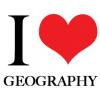- 2 replies
- 1,691 views
- Add Reply
- 0 replies
- 1,101 views
- Add Reply
- 4 replies
- 1,586 views
- Add Reply
- 2 replies
- 2,915 views
- Add Reply
- 0 replies
- 1,202 views
- Add Reply
Segmentation of agricultural crops
By jonaszed,
Hi,
I am new to this group, sorry if this question is answered elsewhere.
Can you suggest me a proven workflow for the segmentation of agricultural crops for satellite images (Sentinel 2, Bing, etc)?
I use QGIS 5.
Regards
Microsoft launches 12 million building footprints in Canada to the OpenStreetMap community

By Lurker,
Digital transformation is providing organizations with not only information that was never thought possible, but information that is accessible and usable. Data is the foundational resource that allows organizations to transform and uncover the insights they need to make smart decisions.
And this transformation is no different when the organization is the Government of Canada.
In July of 2018, StatsCan and Microsoft collaborated in order to tackle a unique challenge for our vast countr
How to add multiple polygon layers to DEM

By Arhanghelul,


I have a shape file containing around 300 polygons and a DEM.
Every polygon represents a waste layer about 10 inch thickness added on the field and marked by a date.
I would like to add each layer to the DEM value.
How can i do this ?
I would also like to create a 3D view in ArcScene for this waste pile, so that each layer can be selected individualy from the waste pile. How can I do that ?
I managed to converted the polygons to features, but i don't know how to continue
Rasterizing Point-Cloud data
By AhmadObeid,
Hello everyone.
I'm trying to figure out if there's any standard, go-to procedure that people in the field of remote sensing use in order to convert point-cloud data to a matrix.
I am a signal processing masters student, specializing in remote sensing and data fusion. Lately I've been going through the literature to see what people usually use, but authors do not, usually, explicitly mention what they do.
I have some Lidar point-cloud data, and the method I used was to simply int
DARPA Looking for a Tools to Capture Underground Worlds in 3D

By Lurker,
DARPA is seeking information on state-of-the-art technologies and methodologies for advanced mapping and surveying in support of the agency’s Subterranean (SubT) Challenge. Georeferenced data – geographic coordinates tied to a map or image – could significantly improve the speed and accuracy of warfighters in time-sensitive active combat operations and disaster-related missions in the subterranean domain. Today, the majority of the underground environments are uncharted or inadequately mapped, i
-
Forum Statistics
8.8k
Total Topics43.5k
Total Posts


